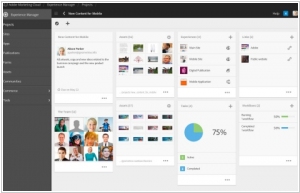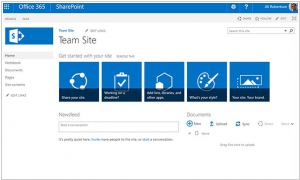Adobe Experience Manager vs SharePoint
March 09, 2025 | Author: Adam Levine
15★
A powerhouse combo for your content and digital asset management needs. Get personalized, content-led experiences into market faster with Adobe Experience Manager, which combines digital asset management with the power of a content management system.
58★
SharePoint's multi-purpose platform allows for managing and provisioning of intranet portals, extranets and websites, document management and file management, collaboration spaces, social networking tools, enterprise search, business intelligence tooling, process/information integration, and third-party developed solutions. SharePoint can also be used as a web application development platform.
Adobe Experience Manager and SharePoint, at first glance, appear to be very different creatures, but like all things in the corporate universe, they share a few suspiciously similar traits. Both are designed to manage content, though what exactly that means depends largely on who’s signing the check. They both claim to help teams collaborate, though this often results in teams collaborating mostly on how to work around them. Security and permissions are taken very seriously, which means that, in practice, no one can ever find the document they need, but rest assured, it’s safe. And of course, both are available on-premises or in the cloud, because having two equally confusing options is far better than one.
AEM, formerly the brainchild of a Swiss company before Adobe scooped it up in 2010, is the sort of thing that marketers and developers swear by (and at). It exists to make web experiences rich, engaging and ideally capable of convincing unsuspecting visitors to buy something they didn’t know they needed. Deeply integrated with Adobe’s suite of creative tools, it allows designers to craft dazzling digital experiences while developers try to make sure those experiences don’t explode on different browsers. It’s the darling of digital experience managers who need to justify why their website now costs more than a small yacht.
SharePoint, meanwhile, is Microsoft’s ever-evolving attempt to ensure that no document is ever truly lost—just deeply, profoundly buried. Introduced in 2001, it has since grown into an all-powerful corporate knowledge vortex, sucking up files, meeting notes and the occasional misplaced soul. It’s the backbone of intranets, workflows and team sites, making sure that HR policies remain unread and important project updates are carefully stored where no one will ever look. Tightly integrated with Microsoft 365, it excels at turning a simple task into a multi-click odyssey, ensuring that collaboration remains an adventure fraught with permission errors and inexplicable formatting changes.
See also: Top 10 Intranet Portals
AEM, formerly the brainchild of a Swiss company before Adobe scooped it up in 2010, is the sort of thing that marketers and developers swear by (and at). It exists to make web experiences rich, engaging and ideally capable of convincing unsuspecting visitors to buy something they didn’t know they needed. Deeply integrated with Adobe’s suite of creative tools, it allows designers to craft dazzling digital experiences while developers try to make sure those experiences don’t explode on different browsers. It’s the darling of digital experience managers who need to justify why their website now costs more than a small yacht.
SharePoint, meanwhile, is Microsoft’s ever-evolving attempt to ensure that no document is ever truly lost—just deeply, profoundly buried. Introduced in 2001, it has since grown into an all-powerful corporate knowledge vortex, sucking up files, meeting notes and the occasional misplaced soul. It’s the backbone of intranets, workflows and team sites, making sure that HR policies remain unread and important project updates are carefully stored where no one will ever look. Tightly integrated with Microsoft 365, it excels at turning a simple task into a multi-click odyssey, ensuring that collaboration remains an adventure fraught with permission errors and inexplicable formatting changes.
See also: Top 10 Intranet Portals




